|
|
This newsletter is a summary of recent ESO Science Announcement items. Follow the links or visit ESO Science Announcements to read more.

|
17 Dec 2015: The Cryogenic high-resolution InfraRed Echelle Spectrograph (CRIRES) is currently undergoing a major upgrade led by ESO in collaboration with a consortium. The upgrade project (CRIRES+), which will significantly expand the scientific capabilities of CRIRES, recently achieved two major milestones: optical Final Design Review (FDR) in June 2015 and Preliminary Design Review (PDR) in September 2015. The current schedule foresees commissioning of CRIRES+ in Q1 2018.
|
|
| Read more
|
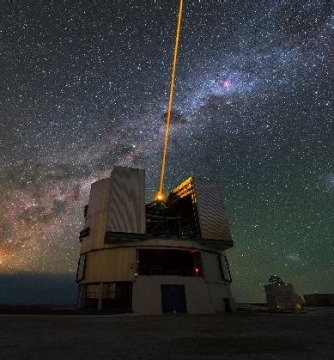
|
17 Dec 2015: The allocation of ESO telescope time for Period 97 (1 April БЂ“ 30 September 2016) is expected to be emailed in the week beginning 21 December 2015. With the release of the telescope schedule, preparation of Service Mode (SM) observations (Phase 2) starts. The deadline for the submission of the Phase 2 material for Period 97 observations is 4 February 2016.
|
|
| Read more
|
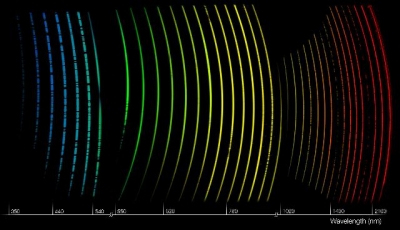
|
16 Dec 2015: ESO Headquarters, Garching, Germany, 9БЂ“13 May 2016
The NEON Archive School on proposal preparation and data reduction for X-shooter and KMOS is open for registration. The School is preferentially targeted to PhD students, but advanced MSc's, postdocs and senior researchers may also apply. Introduction to Phase 1 and 2 for both instruments and hands-on experience with data reduction tools will be provided. Details can be found here. The number of participants is limited to 25 and registration closes on 15 February 2016.
|
|
| Read more
|
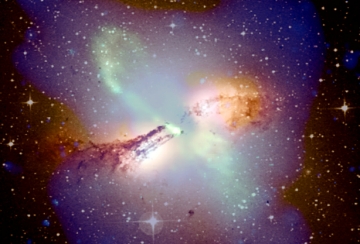
|
16 Dec 2015: ESO Workshop, ESO Headquarters, Garching, Germany, 27 June БЂ“ 1 July, 2016
Active Galactic Nuclei (AGN) are being discovered in ever-larger numbers over the whole electromagnetic spectrum (radio, infrared, optical/UV, X-ray and нЁ-ray), providing different windows on AGN physics. The main goal of the Workshop is to paint the AGN БЂњbig pictureБЂќ, which comes out of the multi-wavelength surveys, and understand the intrinsic and fundamental properties of AGN and the physics behind them. Abstract submission deadline is 26 March 2016.
|
|
| Read more
|
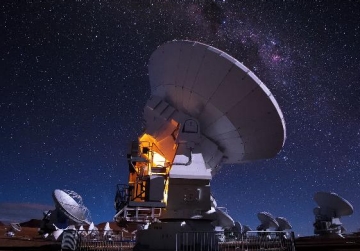
|
15 Dec 2015: The Joint ALMA Observatory (JAO) will start the next cycle of observing (Cycle 4) in October 2016. A Call for Proposals with detailed information on Cycle 4 will be issued in March 2016, with a deadline for proposal submission of 21 April 2016. The pre-announcement highlights aspects of the Cycle 4 proposal call that are needed to plan proposals.
|
|
| Read more
|
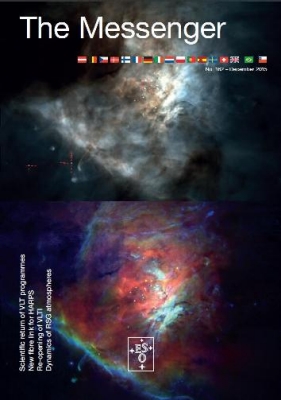
|
15 Dec 2015: The December issue of the ESO Messenger is available. Contents include: a comprehensive study of the science return of the VLT based on 8414 programmes over 15 years; upgrade of the HARPS fibre link; description of the ALMA ARC network; the MUSE study of the Orion Nebula; the atmospheres of red supergiants with VLTI; and a catalogue of stellar magnetic field determinations. View contents with access to PDF.
|
|
| Read more
|
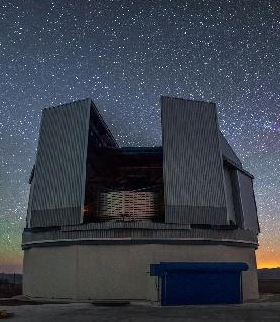
|
04 Dec 2015: The VST ATLAS Public Survey is targeting 4500 square degrees of the southern sky in five filters (u,g,r,i,z) to depths comparable to those of the SDSS. ATLAS is complemented by near-infrared data from the VISTA Hemisphere Survey (VHS) and VISTA VIKING Public Surveys. This first ATLAS catalogue release covers more than 2000 square degrees.
|
|
| Read more
|
Upcoming ESO or ESO-Related Workshops
- Resolving Planet Formation in the Era of ALMA and Extreme AO
Joint ESO, ALMA, NAOJ, NRAO Workshop. ESO Vitacura, Santiago, Chile, 16БЂ“20 May 2016Results from ALMA Long Baseline observations and from SPHERE, GPI and other high-contrast AO instruments herald new developments in the fields of protoplanetary and debris discs, and planet formation. For the first time observations of the regions where planets form are achievable. The workshop will discuss the state-of-the-art results, offering a panchromatic view, with a balance between observations and theory. Discussions will be scheduled on how facilities, such as JWST, E-ELT and TMT, and advances in modeling, will advance the field of planetary formation. The workshop is open for pre-registration.
- Supernovae Through the Ages
Workshop co-funded by ESO, Easter Island, 9-13 August 2016Supernova science has entered a golden age with daily announcements of new discoveries and the rate set to increase with new facilities. As supernova sample sizes increase, well-observed nearby events will still provide insights into progenitor properties and explosion mechanisms. The conference aims at addressing these challenges (and others) through "understanding the past to prepare for the future" with a focus on past, present and future surveys, including also explosion models, progenitors, their link to stellar evolution and the first supernovae.
The conference celebrates the contributions that Mark Phillips and Nicholas Suntzeff have made to this field. Further details are available on the workshop webpage. The registration and abstract submission deadline is 31 March 2016.
|
|
|
|
|
|
|
|